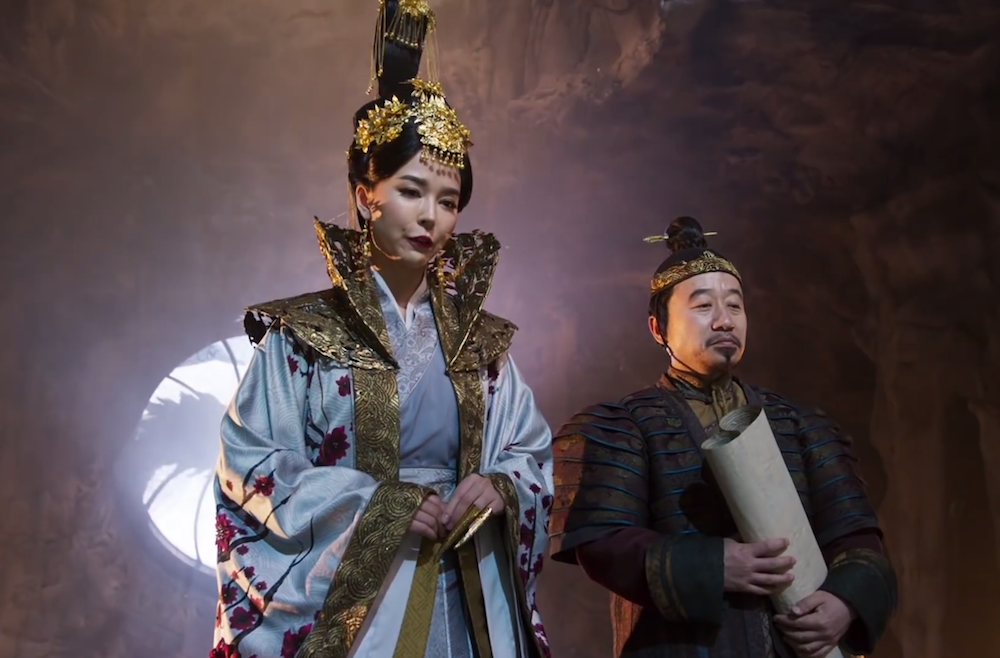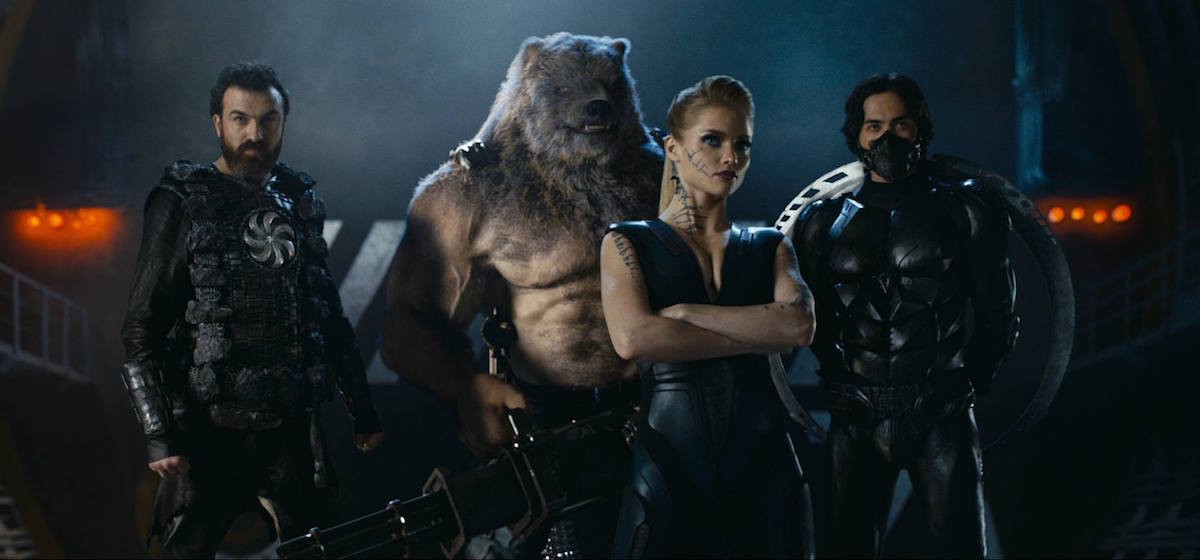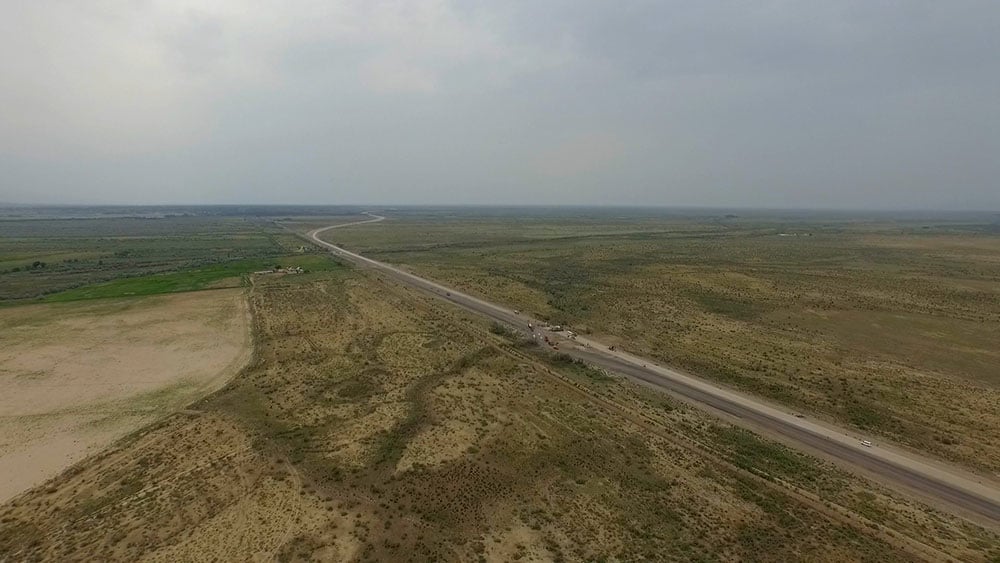Eastern partners: the Russian-Chinese film collaborations trying to hit the big time

Since relations between the West and Russia deteriorated over the 2014 crisis in Ukraine, Russia has sought to boost its relationship with China, and even the film industry has seen some lucrative joint projects. But how far can the cooperation go?
Superstitious villagers, dark horsemen, the living corpse of a dead witch and a chalk circle that protects those inside from demonic forces. These are just some of the elements that are conjured up in Nikolai Gogol’s 1835 novella Viy — a book that’s undergone two major Russian movie adaptations in just four years.
While the first adaptation just aimed to be a blockbuster, the second (to be released next month) has much grander ambitions. It wants to craft a major-league franchise that can affirm Russia’s latest geopolitical partner: China. The fantasy action of Viy 2: Journey to China (alternatively titled The Mystery of the Iron Mask or The Secret of the Dragon’s Seal) follows 18th-century cartographer Jonathan Green (played by Jason Flemyng) as his adventures take him away from the Ukrainian setting of the first film and deep into East Asia. Director Oleg Stepchenko, who directed the original Viy, makes no secrets of the film’s main goal, which he describes as “a demonstration of the culture and history of two great states”.
For Russian filmmakers, the pivot to China is a major move — and the potential spoils are huge. China is one of the biggest (and fastest growing) markets for film in the world. For foreign studios, Chinese partnership transforms a film, legally speaking, into a local production, thus bypassing all the obstacles to domestic release. Added Chinese content, of course, has the benefit of attracting the country’s moviegoing yuan.
Viy 2 features an all-star cast, designed to enshrine its blockbuster status. Alongside Flemyng, there will be Jackie Chan, Game of Thrones’ Charles Dance and none other than Hollywood’s greatest symbol of virility and prowess: Arnold Schwarzenegger. There’s room for everyone under this umbrella, so long as it’s done on Russian terms. With a Western protagonist, powerful Slavic folklore and an exotic Chinese setting, there’s perhaps no other film that better captures the Kremlin’s vision for a world order.
broke national box-office records in China for a non-American opening, it still hasn’t matched the numbers brought in by American franchises like The Fast And The Furious (2001-present) or even Warcraft (2016). To counter strict quotas that limit foreign releases in China, Moscow has successfully negotiated several agreements with Beijing for joint productions.
With a spotty Western protagonist, powerful Slavic folklore and its exotic Chinese setting, there’s perhaps no other film that better captures the Kremlin’s vision for a world order
While Russia, like the Soviet Union before it, has a history of cooperation with East Asian filmmakers (including the 2007 hit Mongol and the classic Dersu Uzala (1975), an Oscar-winning team-up with Akira Kurosawa), there has never been an official collaboration of the kind announced recently. In 2015, Russia’s Ministry of Communications declared the country’s intention for a greater partnership with China — and a signed document came along two years later.
In addition to the jarring tonal shifts that come from uprooting the Viy from its niche Slavic context to a globetrotting Asian martial arts film starring Schwarzenegger, Chinese collaboration has also co-opted other culturally significant franchises. Take Guardians (2017), a Soviet-era answer to The Avengers that, while very much a take on the American superhero genre, finds ample space to express Kremlin-projected values of national unity, stability and strength. While a critical and financial flop in both China and Russia (production company Enjoy Movies went bankrupt afterward), the social value of nation-building via muscle-flexing led the two states to share the costs of a sequel and add a few Chinese superheroes into the mix. That’s not to say Chinese support is unconditional: the third entry of The Snow Queen franchise (2016) was supposed to take Viy 2’s title as the first Russian movie in which Chinese producers got a say, but, in the end, Russian studios took full production responsibility.
In an unexpected turn of events, one of Russia’s greatest successes on Chinese screens actually came with fantasy action thriller He’s a Dragon (2015), produced by Timur Bekmambetov’s company Bazelevs, which was initially rejected for being culturally inappropriate. The film is based on a Russian legend similar to Beauty and the Beast: a young woman is abducted by a dragon before her wedding and taken to an island inhabited by a man who, as it turns out, is the beast itself. Love ensues. The film was refused by Chinese distributors because of its traditionally-minded Christian depiction of dragons as evil, which runs counter to Chinese folklore. In Russia, the film went on to be a considerable flop, with slightly more than half a million tickets sold — but in China, a torrented bootleg befuddled the cultural gatekeepers and garnered over three and a half million views within days of being uploaded.
Seeing the film’s potential, local distributors locked He’s a Dragon into wide release where it made nearly $8 million in four days. A sequel was greenlit within weeks, to be co-produced by China with Chinese characters and locations. The film’s success paved the way for big releases in Japan and South Korea, and the actors quickly became youth Instagram phenomenons.
Unexpected hits aside, all films selected for co-production between Russia and China tend to have certain things in common: from their franchise potential and the inclusion of Chinese heroes and “values”, to a commercial logic and nationalist tropes. For many of Russia’s most commercially successful film directors, such as Bekmambetov (Night Watch, Wanted) and Bondarchuk, giving up creative control is likely to be a small price to pay for what could become a major commercial windfall.
.png)
.png)


.png)
.png)


